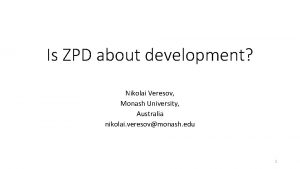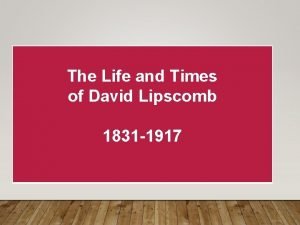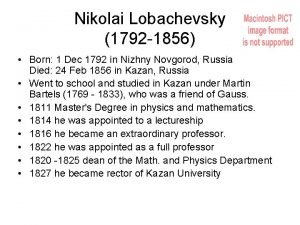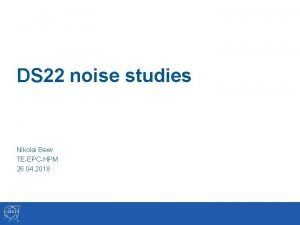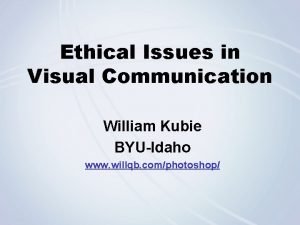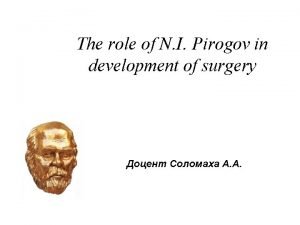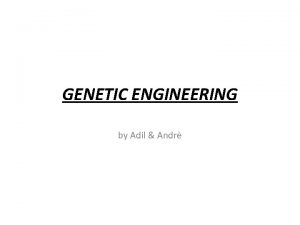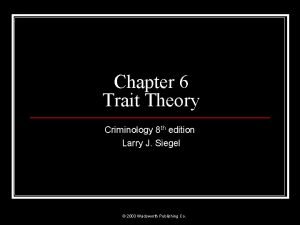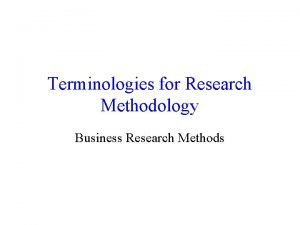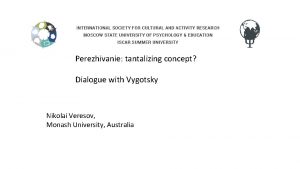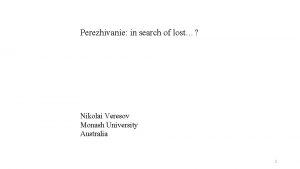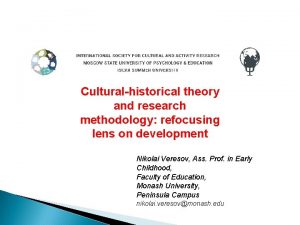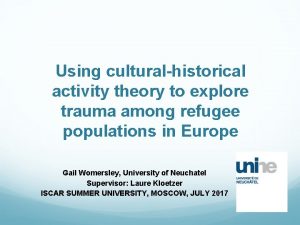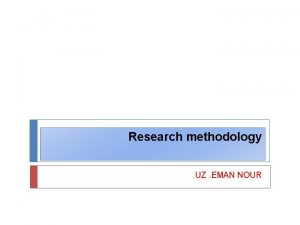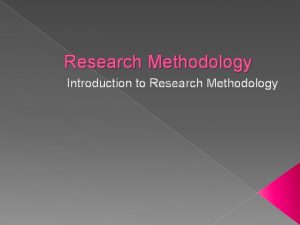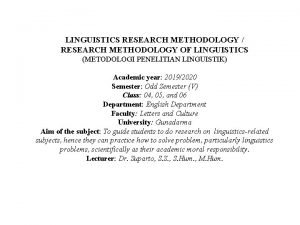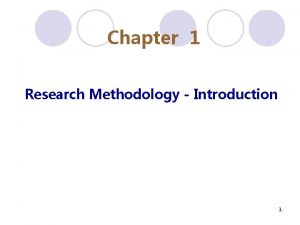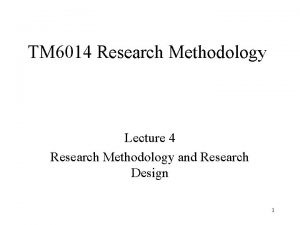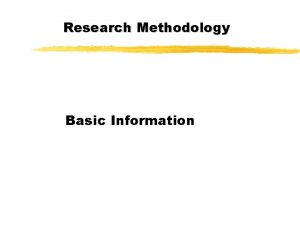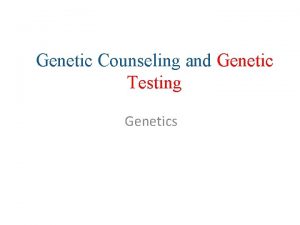Culturalhistorical theory and genetic research methodology Nikolai Veresov





















- Slides: 21

Cultural-historical theory and genetic research methodology Nikolai Veresov, University of Oulu, Finland, nveresov@hotmail. com

Genetic research methodology 2

SOCIAL FACTORS HIGHER MENTAL FUNCTIONS BIOLOGICAL FACTORS LOWER MENTAL FUNCTIONS 3

The social environment is the source for the appearance of all specific human properties of the personality gradually acquired by the child or the source of social development of the child. . . Vygotsky, L. S. (1998). Collected works, Vol. 5, Plenum Press, p. 203 Not the factor, but the source of development “Higher mental functions are not built on top of elementary processes, like some kind of second storey, but are new psychological systems comprising a complex nexus of elementary functions that, as part of a new system, being themselves to act in accordance with new laws” Vygotsky, L. S. (1984). Sobraniye sochinenii, Vol. 6, p. 58 Not “from lower to higher, ” but qualitative change of the whole system of functions

The process of genesis (origins and development) of HMF • sources • character • moving forces • main directions • specific features • results theoretical tools (instruments) - concepts and principles cultural-historical theory experimental tools (instruments) - requirements experimental-genetical method Genetic research methodology 5

“The method we use may be called experimental-genetical method in the sense that it artificially elicits and creates a genetic process of mental development …” Vygotsky, 1997, p. 68 Five basic principles of genetic research methodology (genetic-experimental method of study of the development of higher mental functions) • • • the principle of buds of development the principle of category/drama the principle of ideal and real forms the principle of developmental tools the principle of sustainable results 6

Each them is connected with theoretical concepts of culturalhistorical theory and therefore is a research instrument for the experimental study of development Theoretical analysis and experimental analysis are “two sides of the coin” of genetic research methodology

1. The principle of buds of development Child development is not a linear, homogenous process. Simultaneously, there are different levels of development of different functions in the child. At each age there are functions which are already matured (developed) and there are functions that are in a process of maturation. So there are “functions that have not yet matured but are in the process of maturation, functions that will mature tomorrow but are currently in an embryonic state. These functions could be termed the "buds" or "flowers" of development rather than the "fruits" of development" (Vygotsky, 1982, Vol. 2, p. 226). 8

The principle of “buds of development” means that at the beginning, the experimental study should be aimed to the function (or functions) which are in their “bud” (embryonic) stages, and not already developed. 9

2. The principle of category (collision, dramatic event) The principle of category follows from the general law of cultural development of higher mental functions. “. . . any function in the child’s cultural development appears on stage twice, that is, on two planes. It firstly appears on the social plane and then on a psychological plane. Firstly it appears among people as an inter-psychological category, and then within the child as an intra-psychological category. Genetically, social relations, real relations of people, stand behind all the higher functions and their relations. From this, one of the basic principles. . . is the principle of. . . the experimental unfolding of a higher mental process into the drama that occurs among people. (Vygotsky, 1983, p. 145. ) CATEGORY = DRAMA AMONG PEOPLE 10

The principle of category (collision, dramatic event) means that at the beginning of the experimental study the child should be intellectually and emotionally involved into specially organized dramatical collision (category). The initial (inter-psychological) form of HMF should be created at the beginning of the experimental study of its transformation into the intrapsychological form of HMF The experiencing (perezhivaniye) of the child is a kind of indicator of the level of child’s involvement into this dramatic collision. 11

3. The principle of interaction of real (natural) and ideal (cultural) forms This principle follows from the concept of an ideal and real forms and their interaction The social environment is the source for the appearance of all specific human properties of the personality gradually acquired by the child or the source of social development of the child which is concluded in the process of actual interaction of “ideal” and present forms. Vygotsky, L. S. (1998). Collected works, Vol. 5, Plenum Press, p. 203 12

In none of the types of development known to me does it ever happen that at the moment when the initial form is taking shape. . . the higher, ideal form, which appears at the end of development, should already be present and that it should interact directly with the first steps taken by the child along the path of development of this initial or primary form. Here lies the greatest peculiarity of child development in contrast to other types of development. Vygotsky, L. S. (2001). Osnovy pedologii. Stenogrammy lektsii p. 112– 13. 13

There is no development if there is no interaction between the ideal and real forms. The principle of interaction of real (natural) and ideal (cultural) forms means that in the course of experimental study both forms should be detected. It also means that the higher “ideal form” must be presented from the beginning of the experiment. And, finally, tools and means of interaction between these forms should be specially created and involved in the experimental procedure. 14

4. The principle of developmental tools Mediation X A B BUT: WHAT IS MEDIATION FROM DEVELOPMENTAL PERSPECTIVE? 15

Mediation from the developmental perspective: Mediating activity Use of tools Use of signs Mediating! Not mediated! We need to concentrate not on the product of development but on the very process by which higher forms are established…. Vygotsky, 1978, pp. 64– 65 16

The principle of developmental tools means that during the experiment, cultural tools should not be given to the child directly; they have to be discovered (found) by the child (in cooperation with an adult or more competent peer). The experimenter should have a set of tools that the child is able to discover and master in the course of experimental study. It therefore makes possible the experimental study of development as (1) a transition from non-mediated to mediated functions and (2) the reorganization of the structure of the system of functions 17

5. The principle of sustainable results This principle follows from the concept of psychological neo-formations (qualitative changes as results of development) By age-related new formations we must understand that new type of construction of the personality and of its activity and those psychic and social changes that first arise at a given age level and that in the main determine the consciousness of the child. Vygotsky, L. S. (1984). Collected Works (Russian Edition), vol. 4, p. 248. Neo-formations are not just new functions that appeared as the results or outcomes of development. They are, rather, a new type of construction and organisation of the psychological system as a new nexus of elementary and higher functions. 18

The principle of sustainable qualitative changes means that the results of the experimental study must reveal not simply statistically valid changes, but reveal a new quality of the structure and the construction of child’s consciousness as a result of its re-organization. These new qualitative levels of organization should be experimentally detected and described. 19

The process of genesis (origins and development) of HMF • sources • character • moving forces • main directions • specific features • results theoretical tools (instruments) - concepts and principles cultural-historical theory experimental tools (instruments) - requirements experimental-genetical method Genetic research methodology 20

Theory without an experiment is voluntary play of mind. An experiment without a theory is a knife without a handle. 21
 Nikolai veresov
Nikolai veresov Specation
Specation Genetic programming vs genetic algorithm
Genetic programming vs genetic algorithm Genetic programming vs genetic algorithm
Genetic programming vs genetic algorithm What is gene flow and genetic drift
What is gene flow and genetic drift Genetic drift vs genetic flow
Genetic drift vs genetic flow Nikolai lipscomb
Nikolai lipscomb Nikolai lobachevsky
Nikolai lobachevsky The nose genre
The nose genre Nikolai beev
Nikolai beev Nikolai yezhov
Nikolai yezhov Nikolai yezhov
Nikolai yezhov N.i. pirogov
N.i. pirogov Nikolai franzewitsch gastello
Nikolai franzewitsch gastello Nikolai gumiliov
Nikolai gumiliov Pros and cons of genetic engineering
Pros and cons of genetic engineering What is genetic research
What is genetic research Biosocial trait theory
Biosocial trait theory Kind of quantitative research
Kind of quantitative research Objective in research
Objective in research Theoretical paradigm example
Theoretical paradigm example Objectives of research methodology
Objectives of research methodology
